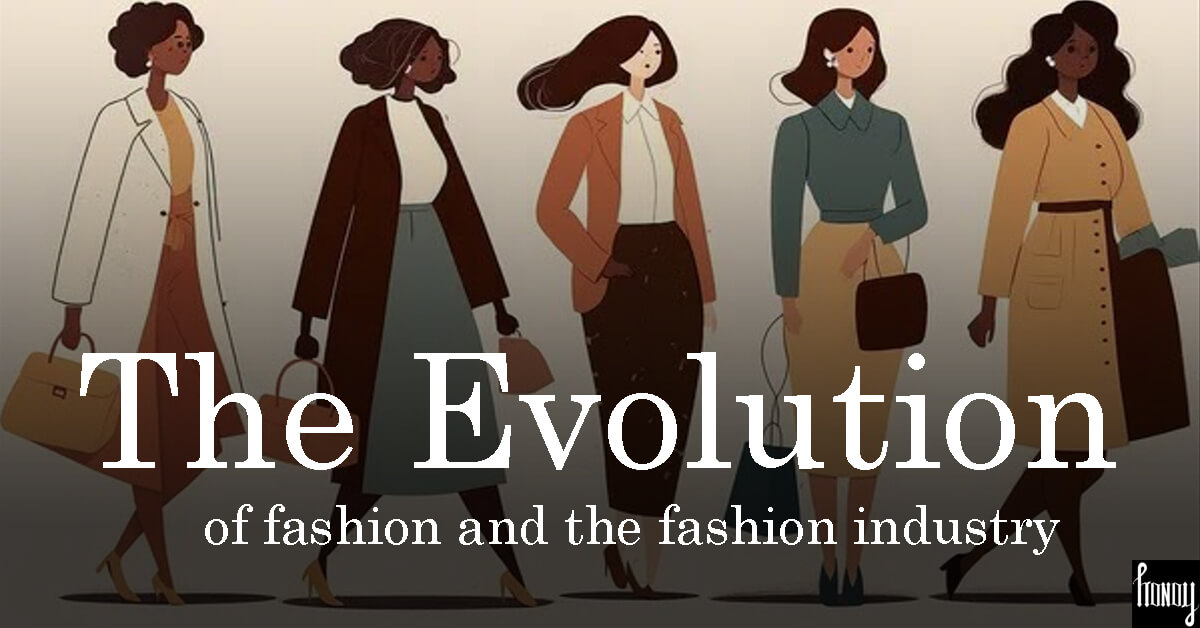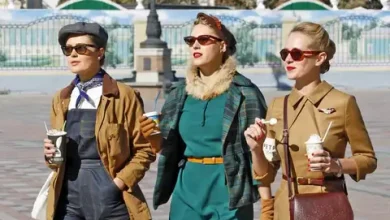The Evolution of Faistion: A Comprehensive Look at the Fashion Industry

Introduction
The fashion industry, often referred to as “Faistion” in certain circles, is a dynamic and ever-evolving sector that influences culture, economy, and individual expression. From haute couture to streetwear, fashion is a powerful medium that reflects societal changes, technological advancements, and artistic innovation. This article delves into the multifaceted world of Faistion, exploring its history, current trends, and future prospects.
The Historical Roots of Faistion
Ancient Beginnings
Fashion, or Faistion, has ancient roots that date back to the earliest civilizations. In ancient Egypt, clothing was not only a necessity but also a symbol of status and power. Pharaohs adorned themselves with elaborate garments made from fine linen, while commoners wore simpler attire. Similarly, in ancient Greece and Rome, clothing was a reflection of social hierarchy, with togas and tunics indicating one’s place in society.
The Middle Ages and Renaissance
During the Middle Ages, fashion became more structured and elaborate. The introduction of tailoring techniques allowed for more fitted garments, and the use of luxurious fabrics like silk and velvet became prevalent among the nobility. The Renaissance period saw a resurgence of interest in art and culture, which was reflected in clothing. Elaborate embroidery, intricate patterns, and the use of rich colors became hallmarks of Renaissance fashion.
The Industrial Revolution
The Industrial Revolution marked a significant turning point in the history of Faistion. The invention of the sewing machine and the mass production of textiles made clothing more accessible to the general public. This period also saw the rise of fashion houses and designers who began to create unique and innovative designs. The concept of “fashion seasons” emerged, with new styles being introduced regularly to keep up with changing tastes.
The Modern Era of Faistion
The 20th Century: A Century of Change
The 20th century was a period of rapid change and innovation in the world of Faistion. The early 1900s saw the rise of iconic designers like Coco Chanel and Christian Dior, who revolutionized women’s fashion with their timeless designs. The 1920s brought about the flapper era, characterized by shorter hemlines and a more relaxed silhouette, reflecting the changing roles of women in society.
The mid-20th century saw the emergence of youth culture and the influence of music on fashion. The 1960s and 1970s were marked by bold patterns, psychedelic prints, and the rise of counterculture fashion. Designers like Mary Quant and Yves Saint Laurent played pivotal roles in shaping the fashion of this era.
The Rise of Fast Fashion
The late 20th and early 21st centuries saw the rise of fast fashion, a phenomenon that has had a profound impact on the industry. Fast fashion refers to the rapid production of inexpensive clothing that mimics current trends. Brands like Zara, H&M, and Forever 21 have become synonymous with this model, offering consumers affordable and trendy clothing at a rapid pace.
While fast fashion has made fashion more accessible, it has also raised concerns about sustainability and ethical practices. The environmental impact of mass production, the exploitation of labor, and the disposable nature of fast fashion have sparked a growing movement towards more sustainable and ethical practices in the industry.
Current Trends in Faistion
Sustainability and Ethical Fashion
In recent years, there has been a growing emphasis on sustainability and ethical practices in the fashion industry. Consumers are becoming more aware of the environmental and social impact of their clothing choices, leading to a demand for more sustainable options. Brands are responding by incorporating eco-friendly materials, ethical labor practices, and circular fashion models into their business strategies.
Sustainable fashion encompasses a wide range of practices, from using organic and recycled materials to reducing waste and carbon emissions. Ethical fashion focuses on fair labor practices, ensuring that workers are paid fair wages and work in safe conditions. The rise of second-hand and vintage clothing markets also reflects a shift towards more sustainable consumption.
Technology and Innovation
Technology is playing an increasingly important role in the world of Faistion. From 3D printing to virtual reality, technological advancements are transforming the way clothing is designed, produced, and consumed. 3D printing, for example, allows designers to create intricate and customized garments with minimal waste. Virtual reality and augmented reality are being used to enhance the shopping experience, allowing consumers to try on clothes virtually before making a purchase.
Artificial intelligence (AI) is also making its mark on the fashion industry. AI-powered algorithms are being used to predict trends, optimize supply chains, and personalize the shopping experience. Social media platforms like Instagram and TikTok have become powerful tools for fashion influencers and brands to connect with consumers and showcase the latest trends.
Inclusivity and Diversity
The fashion industry is becoming more inclusive and diverse, reflecting the changing demographics and values of society. There is a growing recognition of the importance of representing different body types, ethnicities, genders, and abilities in fashion. Brands are expanding their size ranges, featuring diverse models in their campaigns, and creating adaptive clothing for people with disabilities.
The rise of gender-neutral and unisex fashion is also a reflection of this shift towards inclusivity. Designers are challenging traditional gender norms and creating clothing that can be worn by anyone, regardless of gender identity. This trend is not only a response to changing societal attitudes but also a reflection of the growing demand for more inclusive and representative fashion.
The Future of Faistion
The Role of Artificial Intelligence
As technology continues to advance, the role of artificial intelligence in the fashion industry is expected to grow. AI has the potential to revolutionize every aspect of the industry, from design and production to marketing and retail. AI-powered tools can analyze vast amounts of data to predict trends, optimize inventory, and personalize the shopping experience.
One of the most exciting applications of AI in fashion is the development of virtual stylists. These AI-powered assistants can provide personalized fashion advice based on a consumer’s preferences, body type, and lifestyle. Virtual stylists can help consumers make more informed purchasing decisions, reducing the likelihood of returns and increasing customer satisfaction.
The Rise of Circular Fashion
Circular fashion is an emerging concept that aims to create a more sustainable and regenerative fashion industry. Unlike the traditional linear model of “take, make, dispose,” circular fashion focuses on creating a closed-loop system where materials are reused, recycled, and regenerated. This approach reduces waste, conserves resources, and minimizes the environmental impact of fashion.
Brands are increasingly adopting circular fashion practices, such as offering rental and resale options, using recycled materials, and designing for durability and recyclability. The rise of second-hand and vintage clothing markets is also a reflection of this shift towards circular fashion. As consumers become more conscious of the environmental impact of their clothing choices, the demand for circular fashion is expected to grow.
The Impact of Globalization
Globalization has had a profound impact on the fashion industry, and this trend is expected to continue in the future. The rise of e-commerce and digital platforms has made it easier for brands to reach a global audience, while also increasing competition. Consumers now have access to a wide range of fashion options from around the world, leading to a more diverse and dynamic market.
However, globalization also presents challenges, such as the need to navigate different cultural norms and regulations. Brands must be mindful of cultural sensitivities and ensure that their products and marketing strategies are appropriate for different markets. The rise of local and independent designers is also a response to the homogenization of fashion, as consumers seek out unique and authentic products that reflect their cultural identity.
The Influence of Social Media
Social media has become a powerful force in the fashion industry, and its influence is expected to grow in the future. Platforms like Instagram, TikTok, and Pinterest have become essential tools for brands to connect with consumers, showcase their products, and build their brand identity. Fashion influencers and bloggers have also become key players in the industry, shaping trends and influencing consumer behavior.
The rise of social commerce, where consumers can purchase products directly through social media platforms, is also transforming the way fashion is marketed and sold. Brands are leveraging social media to create immersive and interactive shopping experiences, such as live-streamed fashion shows and virtual try-on features. As social media continues to evolve, its impact on the fashion industry is likely to become even more significant.
Conclusion
The world of Faistion is a complex and ever-changing landscape that reflects the cultural, technological, and societal shifts of our time. From its ancient roots to the modern era of fast fashion and sustainability, the fashion industry has undergone significant transformations. As we look to the future, the role of technology, sustainability, inclusivity, and globalization will continue to shape the industry.
The rise of artificial intelligence, circular fashion, and social media are just a few of the trends that are expected to drive the future of Faistion. As consumers become more conscious of the environmental and social impact of their clothing choices, the demand for sustainable and ethical fashion is likely to grow. At the same time, technological advancements will continue to revolutionize the way fashion is designed, produced, and consumed.
In this dynamic and ever-evolving industry, one thing is certain: Faistion will continue to be a powerful medium for self-expression, cultural reflection, and artistic innovation. Whether through the timeless designs of haute couture or the bold statements of streetwear, fashion will always be a reflection of who we are and who we aspire to be.



